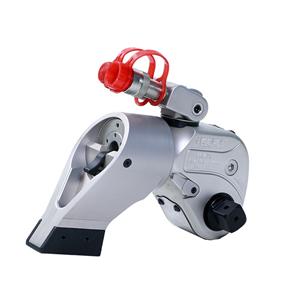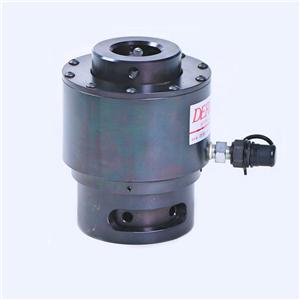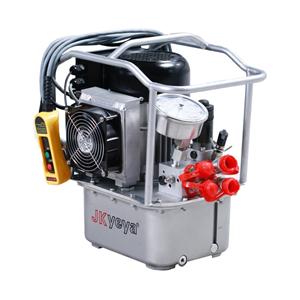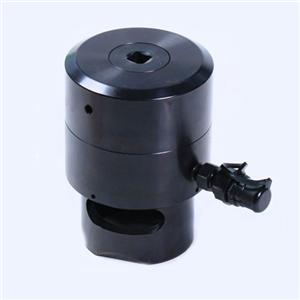Bolt Torqueing VS Bolt Tensioning, Which Is Better?
Before comparing torque and tension, you must first understand the principle of tightening bolts. Tightening the bolts correctly can take advantage of their elastic properties. In order to form a tight connection, they must move like springs. When a load is applied by a torque wrench or tensioner, the bolt stretches and tries to return to its original length. The tension generated by the load causes the clamping force to work together with the friction of the bolt thread to tighten the bolt.
What is bolt torque?
The torque applied by the wrench to the bolt is the torque applied multiplied by the distance the bolt rotates. The torque achieves the pre-tightening of the bolted connection firmware. Torque generates this load by the rotational force acting on the nut or bolt head. The unit of this torque is usually expressed in foot pounds or Newton-meters.
Regardless of whether the bolt torque is achieved by an ordinary wrench or a hydraulic torque wrench, it is the easiest way to achieve axial load.
What is bolt tension?
The bolt or stud tension generates an axial load, and the target bolt load is reached by pulling up a pre-fastener. The main point is to understand the area of the tensioner and the force applied to the fastener, and then adjust the pressure of the stretching pump.
Hydraulic tensioning technology began in the 1970s. In the next 50 years, tensioning technology became more and more common in specific applications, such as oil, natural gas, wind energy, subsea and power generation industries, where many large-diameter bolts are used for high-pressure flanges or critical joints.
What is the difference between torque and tension?
Torque
Stretch the bolt or stud to a predetermined load. Stretching is done by turning the nut. Due to the inclination angle of the thread, the nut rotates on the surface of the clamped component. When the clamping load increases, the friction between the nut and the surface of the component increases to a predetermined amount.
Main feature
• Lower precision than hydraulic tensioning
•cheaper
•More diverse
•Usually used for smaller fasteners
•Simple to use
The biggest advantage of torque is that it is more cost-effective than tensioning. However, the skill level of the torque tool user is the determining factor for the success and accuracy of torque tightening.
In addition, in order to obtain the correct torque and tension relationship, the k factor is crucial. (Note: The k-factor and the friction coefficient are not the same thing.) An appropriate k-factor is essential for understanding the value of torque that needs to be applied. You also need to consider the friction of the bearing surface, bolt diameter, and other variables.
Secondly, the tension is more precise, but if the user is skilled, the torque can also become very precise.
Under normal circumstances, the accuracy of torque tools is within ±30%. So if your target load is 50 KSI, then the actual bolt load of your fastener is between 35KSI and 65KSI. (The difference in bolt load between flanges is called "bolt dispersion". The lower the bolt dispersion, the more consistent the flange combination.)
Torque is a relatively simple method. Torque wrenches can be purchased at any industrial factory.
Appropriately trained assemblers, coupled with proper lubrication and proper (experimentally determined) calculation of the k factor, the torque accuracy can be significantly higher than 30%. For example, for a well-trained assembler, achieving an accuracy of +/- 15% is simple.
Tension
The purpose of tensioning is to stretch the bolt or stud to a predetermined load. Stretch the handle by using force.
This is done by the pulling or pushing force generated by the hydraulic cylinder. Then you can use a wrench to manually fix the nut, and only a small rotational force is required. It is necessary to have some extra threads above the nut to connect the tensioning cylinder and remove it when finished.
Main feature:
• Stable and easy to control
• Highly accurate
• Usually more expensive than other systems
•Most commonly used for large bolts
Tension does not apply torsion force on fasteners like torque. We see that tensioners are mostly used for rotating equipment such as long threaded fasteners and reciprocating rods. Another advantage of tensioning is for large diameter bolts. When tightening large-diameter bolts, the tightening efficiency is higher.
The accuracy of tension is +/- 10%. If the target is 50 KSI, then the actual bolt load of your fastener is between 45KSI and 55KSI. Tensioning is more expensive and more complicated than torque. Therefore, skilled workers are required to use bolt tensioner.
Application examples
When should the bolt torque wrench and bolt tensioner be used? When we want to connect a 26" #900 flange, should we use a bolt tensioner?
Bolt torque is a very inaccurate method of measuring washer load. The friction of bolt/nut threads depends on bolt tolerance, lubrication, and luck. For high pressure flanges, I recommend that you use a tensioner to get the correct washer load.
Of course, these two tightening measures will eventually accomplish their tasks. However, for large flanges like this, tensioning is advantageous not only for the reasons outlined above, but also because it is a faster process. When tensioning, one person can tighten at least 50% of the bolts at the same time. In some cases, it can even be tightened by 100% at the same time. This is important because it ensures consistent compression of the washer, thereby reducing the risk of damage.
As mentioned above, torque can also be used. However, this gives up the benefits previously described. In addition, in order to solve the inherent inaccuracies in the tightening of critical flange torques, the bolt stress must be verified after tightening. This is necessary because it will allow the operator to "adjust" the torque applied to each fastener. In doing so, people usually find it necessary to apply a different torque to each fastener to ensure they are all the same "tight".
Therefore, for IMO studs larger than 1.5 inches, use tension (especially if your design pressure is close to the upper limit of the flange pressure range). For bolts of 1.5 inches or smaller, torque is recommended.
Summarize
When deciding which tool to use to achieve the required fixture load, it is important to consider engineering specifications. If tension is specified, it must be tension. If torque is specified, tensioning can be used if it can be approached. Many torque specifications allow greater accuracy, and there is no need to use tension.
Customers often don't know whether torque or tension is the best method for their specific application. Both methods can achieve tightening bolt loads, but the two methods are very different, and various factors need to be considered before making the most appropriate choice.
The bolt is designed to stretch only a small part. Due to the elasticity of the bolt material, the bolt wants to return to its original shape. This inherent bolt spring tension causes the clamping force and the friction of the bolt thread to prevent loosening. Both torque wrenches and bolt tensioners stretch bolts to generate spring tension. However, they use different methods to accomplish this. "Torque" is just a measure of the torsional force required for the nut to rotate upward along the bolt thread, while "tension" is the tension or elongation of the bolt that provides the clamping force of the connection.
Torque is a very indirect indicator of tension, because many factors affect this relationship, such as surface texture, rust, oil, chips, thread series and material type, etc.
If your application has a lot of bolts to be tightened, torque and high-quality torque wrenches are a good choice. However, if you have a "critical path application" you need accurate results, even bolt loads, and tensioning is recommended.
Both tools have their own advantages and disadvantages, and it is important to use the method recommended by the manufacturer.




